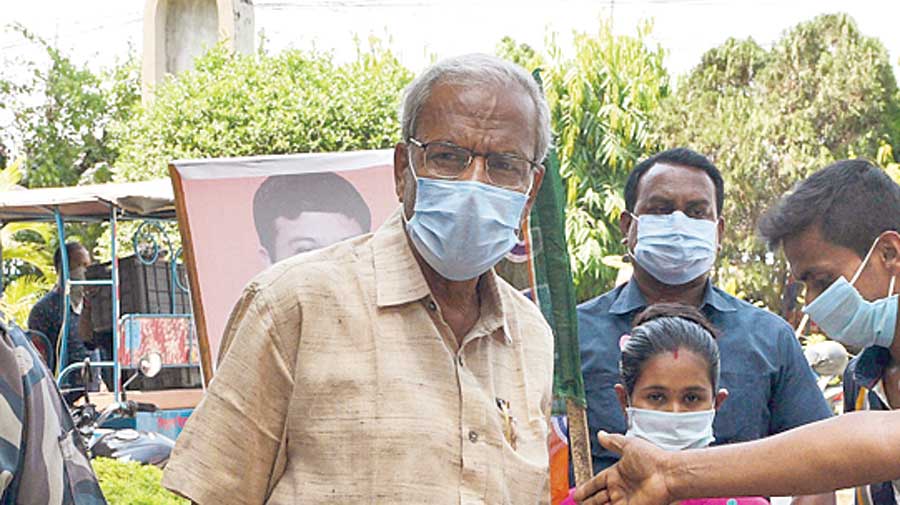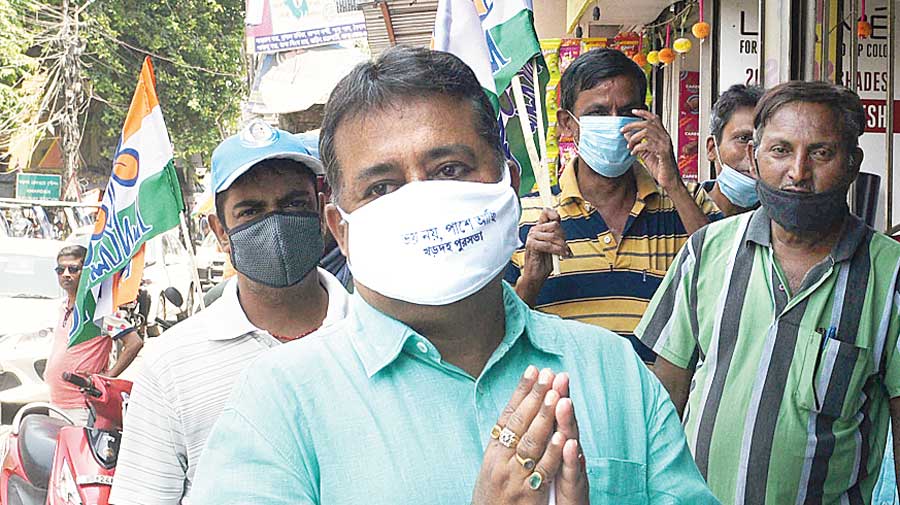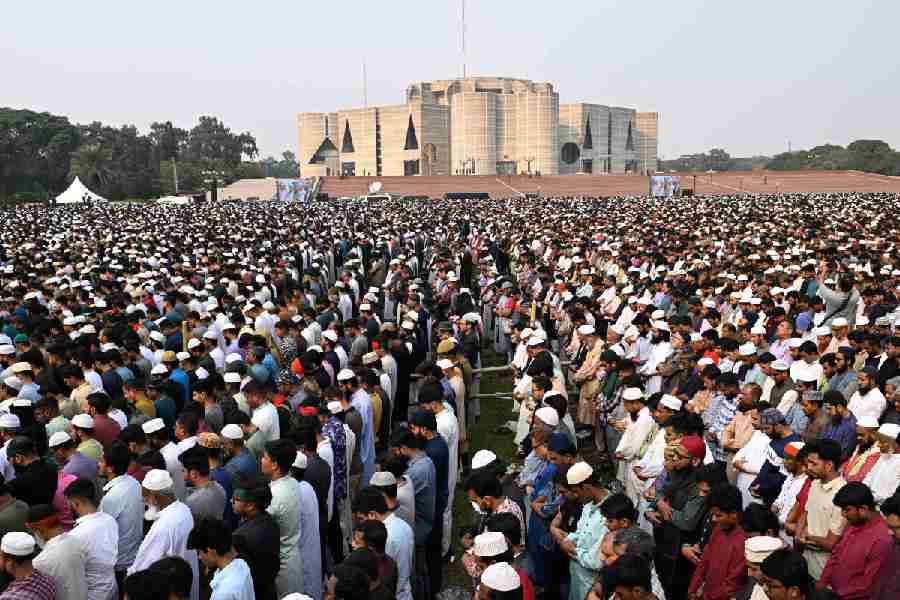⚫ Has the debt-to-GDP ratio improved in Bengal since the change of guard in 2011?
⚫ Were the zero-deficit budgets of the Left regime the result of statistical jugglery?
⚫ Has Bengal done better in terms of human development indices after 2011?
⚫ Has the rate of implementation of investment proposals improved since 2011?
⚫ Did tax reforms start in Bengal during Left rule or after that?
For the uninitiated, there have always been complaints about lack of transparency in economic data shared by successive governments in Bengal. But the residents of Khardah, a township barely 20km from the heart of Calcutta, cannot share this grouse — after all they have been fed on a healthy diet of economic jargon every election season for over 34 years.
“The biggest difference in the 2021 election is that no one is talking economics,” says Subhasish Roy, a bank employee, a wry smile playing on his lips.
This North 24-Parganas constituency has had the unique distinction of electing the finance minister of Bengal since 1987. The CPM’s Asim Dasgupta, a PhD in economics from the Massachusetts Institute of Technology, represented Khardah from 1987 to 2011. For the next two terms, Trinamul’s Amit Mitra, a PhD in economics from Duke University, took over.
Dasgupta and his junior at the erstwhile Presidency College are not in the race this summer, but their duel — and campaign style — are very much part of the gossip in Khardah that votes on April 22.

The BJP’s Shilbhadra Datta Pradip Sanyal
“Asim-babu had interest in a wide array of things…. I still remember his campaign, during which he would suddenly enter a park and play cricket or football with youngsters. But his campaign addresses used to be full of topics related to economics,” recounted a CPM old-timer who used to play an important role in drawing up the Salt Lake resident’s campaign roster.
Several residents of Khardah this correspondent spoke to still remember the battles of 2011 and 2016 when debates on economics took centrestage.
“Amit-babu’s campaign pitch revolved around Asim-babu’s alleged mishandling of the state’s finances.… Bengal’s indebtedness, per-capita debt, tax-to-GDP ratio — all these numbers were part of the campaign addresses,” recounted Joyshankar Bhattacharya, a resident of Khardah and professor of economics.
Dasgupta used to respond to the charges levelled by Mitra, a south Calcutta resident, in his meetings. The debates on economics — and associated discussions on comparisons between MIT and Duke — became so intense that they entered poll pamphlets and wall graffiti in Khardah.
Cut to 2021, the pre-poll discourse among the contenders doesn’t look like they are straight out of an economics classroom. BJP nominee Shilbhadra Datta, who is up against Trinamul’s Kajal Sinha and the CPM’s Debojyoti Das, is happy about it.
“Two finance ministers represented this constituency for so many years…. The people of Khardah only got lectures in economics, but no actual development took pace here. There is scarcity of drinking water in Khardah. This is a tragedy and I promise to bring real change,” Datta said.

The CPM’s Debojyoti Das campaign in Khardah Pradip Sanyal
While Datta, who had earlier represented Barrackpore as a Trinamul MLA, didn’t find any merit in the discussions on the state of the economy in election season, some residents of Khardah said they had every right to know about Bengal’s macroeconomic situation as the state’s finance ministers had represented them.
“As the constituency of successive finance ministers, the profile of Khardah was different…. Besides, the discourse on economics also added a different identity to Khardah,” said Bhaskar Roy, a private sector employee.
“The only problem was, some experts in state finances used to claim that they were not as lucky as the residents of Khardah because their questions on the state’s economy were often not answered,” he added.
Trinamul nominee Sinha, whom Mamata Banerjee has fielded due to Mitra’s indisposition amid the pandemic, didn’t want to get drawn into the debate on economics.
“I was born here, I grew up here and my political life was shaped by the people of Khardah…. I am Mamata Banerjee’s candidate and almost everyone knows me in Khardah. These two are my main campaign pitches,” said Sinha, who won many a heart by running community kitchens and setting up
safe homes and quarantine centres during last year’s Covid surge.
Unlike Mitra, who had been billed as the next finance minister even before the 2011 polls, Sinha has maintained a low profile, rising from the grassroots and commanding a strong following among youths.
The CPM’s Das, a product of student politics, has already made a mark among the electorate with his matured addresses and door-to-door campaigns and is expected to increase the party’s vote share from 11.84 per cent in the 2019 Lok Sabha polls.
However, the contest in Khardah, which has over 2.32 lakh voters, is between Sinha and Datta.
As Trinamul had got a slender 1,000-plus lead over the BJP from Khardah in the last general election, the saffron party is confident of winning the seat, riding a perceived wave despite poor organisational base.
Sinha, on the other hand, is confident that his local connect will be enough to see him through.










